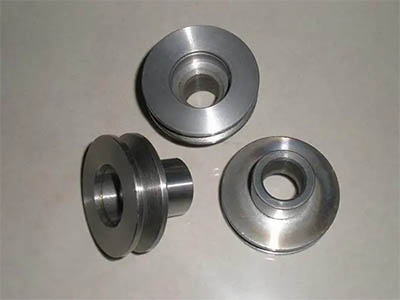- How to prevent machine tool casting defects
- Composition ratio of stainless steel cleaning agent
- Which kind of steel castings is the most suitable for non-destructive testing
- Scope and method of clean up of precision casting
- The coating and liquidity of stainless steel precision casting coatings
- Structural characteristics of machine tool casting
- Effect of density and Properties of large Steel Castings
- Why is it said that deoxidation is the key to improve the quality of molten steel?
- Comparison between Die Casting and Sand Casting
- Brief introduction of centrifugal ductile cast iron pipe
- Call : +86 13390692151
- sale@kfqizhongji.com
-
Room 1, No. 21, Chaoying East Road, Zhoushi,
Kunshan City, Jiangsu Province, China
Testing method of large Steel Castings in quality Inspection
In the production of large steel castings, sometimes there are surface defects, which will directly affect the surface quality of casting, so how to detect large steel castings?
1.Liquid penetration testing of large steel castings.
Liquid penetration testing is used to detect all kinds of opening defects on the surface of casting castings, such as surface cracks, surface pinholes and other defects which are difficult to be detected by the naked eye. The commonly used penetration test is coloring detection, that is, the surface is impregnated or sprayed with highly permeable colored (usually red) liquids (infiltrating agents). The infiltration agent infiltrates the opening defect, quickly erases the liquid layer on the surface, and then sprays an easy-to-dry chromogenic agent (also known as chromogenic agent) on the surface of the slag tank casting. After the impregnating agent remaining in the opening defect is sucked out, the chromogenic agent is dyed, which can reflect the shape and shape of the defect. It should be pointed out that the accuracy of penetration detection decreases with the increase of the surface roughness of the tested materials, that is, the brighter the surface is, the better the detection effect is, the higher the surface detection accuracy of grinder polishing is, and even the intergranular cracks can be detected. In addition to staining detection, fluorescence permeation detection is also a common liquid penetration detection method, which needs to be equipped with ultraviolet lamp for observation, and its detection sensitivity is higher than that of staining detection.
2. Eddy current testing of large steel castings.
Eddy current testing is suitable for detecting defects below the surface of the foundry workshop, and the depth is generally no more than 6 ~ 7 mm. Eddy current testing can be divided into two kinds: coil placement method and coil passing method. When the sample is placed near the coil with alternating current, the alternating magnetic field entering the casting sample of the foundry can induce a current (eddy current) perpendicular to the direction of the excitation magnetic field in the sample, and the eddy current will produce a magnetic field opposite to the direction of the excitation magnetic field. the original magnetic field in the coil is weakened, resulting in the change of coil impedance. In the casting process, if there are defects on the surface of the slag tank casting, the electrical characteristics of the eddy current will be distorted, so that the defects will be detected. The main disadvantage of eddy current testing is that it can not directly display the size and shape of the defects, and generally can only determine the surface position of large steel castings. In addition, the sensitivity of detecting small opening defects on the workpiece surface is not as good as that of penetration testing.
3.Magnetic particle testing of large steel castings.
Magnetic particle testing is suitable for detecting surface defects of large steel castings and defects a few millimeters below the surface. It requires DC (or AC) magnetization equipment and magnetic powder (or magnetic suspension) for testing. The magnetization equipment is used to generate a magnetic field on the inner and outer surfaces, and the magnetic powder or magnetic suspension is used to display defects. When the casting produces magnetic field in a certain range, the defect in the magnetized area will produce magnetic leakage field. When spraying magnetic powder or suspension, the magnetic powder is attracted so that the defect can be shown. Defects shown in this way are basically transverse to the magnetic line of force, while long defects parallel to the line of magnetic force cannot be displayed. Therefore, it is necessary to constantly change the magnetization direction during the operation to ensure that defects in all unknown directions can be detected.





